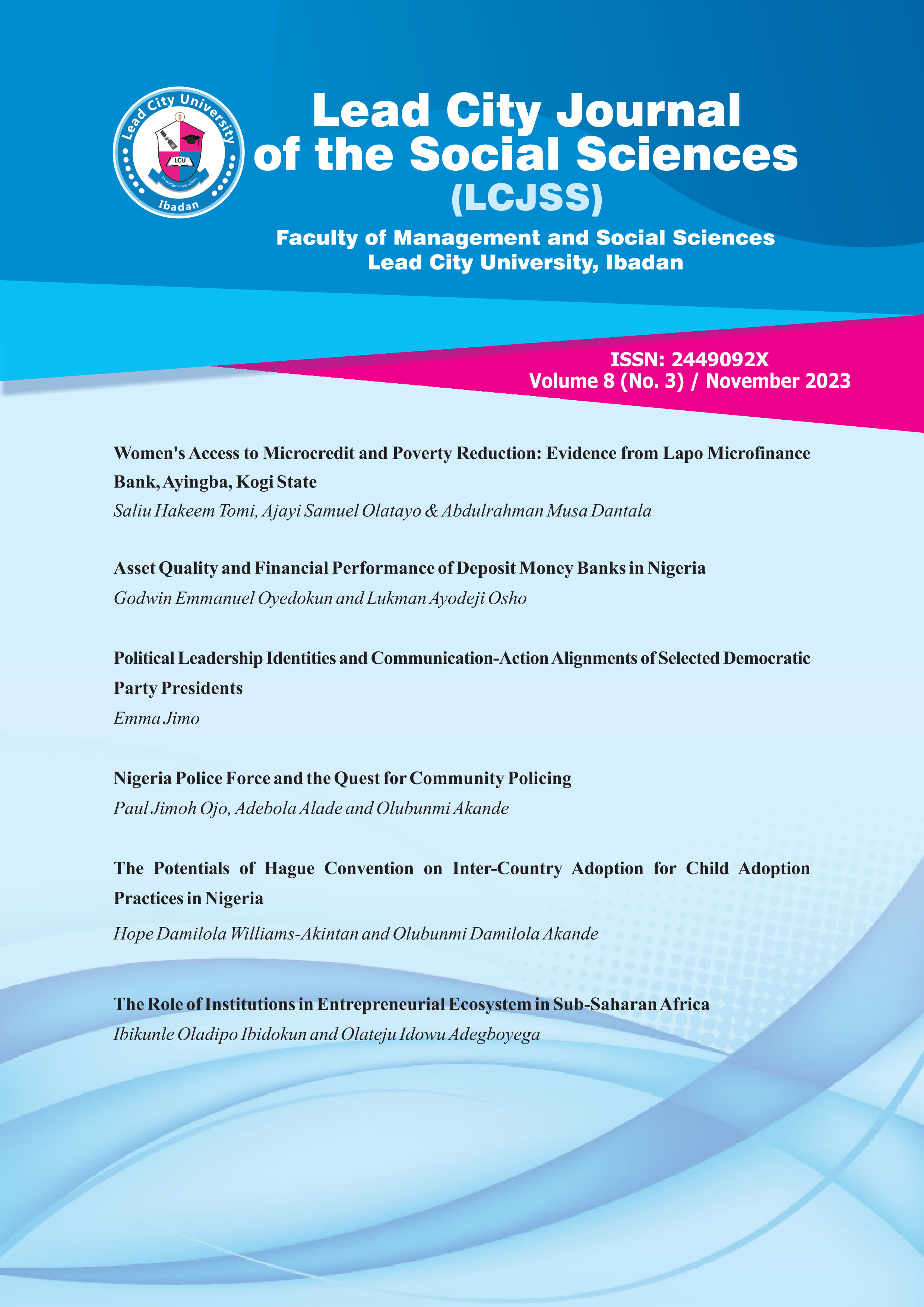Political Leadership Identities and Communication-Action Alignments of Selected Democratic Party Presidents
Political Leadership Identities and Communication-Action Alignments of Selected Democratic Party Presidents
Keywords:
: Political Leadership, Political Communication, Identities, Democratic Party, Two PresidentsAbstract
Political communication is a politician's veritable tool for policy and leadership character
revelations.Itsimportance underlies and massive government investment in public communication
so that governments make calculated human capital commitment. Political leaders and
communicators are or should usually be deeply rooted in, influenced, and limited by certain
(un)written codes. This study examined how two democratic party presidential standard bearers,
American Obama and Nigerian Obasanjo, presented whatever they said; and why they did, or
not do as told. The thesis problem was mainly unravelling identifiable comparisons, and
communication identities of two flag-bearers that turned executive presidents and how their
presidential political communication correlated, linked, and affected the polity to which it was
communicated. The paper answered two research questions: what were the politics and political
communication identities of two presidents, and how much did their politics, or stipulated
leadership roles align with their actual actions? Related literature was reviewed. The study fitted
into two models, using two political communication theories: mainly 'Aristotelian Political
Rhetoric and 'Constructivism' as theoretical guides. Using original communications of two
presidents, this comparative and historical study – requiring qualitative methodology – bridged
the sparse scholarship on comparative presidential leadership and political communication.
Purposively selected sample population were collated, analysed and interpreted, deploying
multiple instruments, majorly content and discourse analyses chosen for their effectiveness at
measuring predetermined variables. Selected published presidential communication totalling
336 obtained from secondary sources formed the sample population. Main findings revealed
both presidents largely differed in their communication-achievement alignment, though they had
similar political background. They were more widely divergent in their communication identities
in accomplishment of statutory political leadership responsibilities. The paper concludes that
the presidents did less of policy actions on their talking points.

